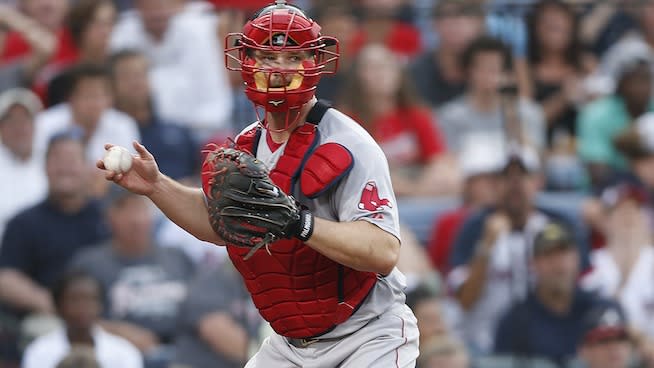Baseball Catcher Technique, Part 6: Defensive Positioning and Relay Communication

In baseball catching, proper defensive alignment and relay communication can be the difference between a win and a loss—if only because the catcher is the one player who can see all of his teammates while playing his position.
The baseball catcher is the leader and the field general for his team. He has to know and understand each position and play, and how to act on that play. He can't be timid. Being vocal at the right time and saying the right things are key.
Here are some tips to maximize your communication as a catcher:
RELATED: Block More Balls With These Catcher Drills
1. Understand each defensive position and its possible situations
For example, if you know that a hitter has above-average speed, you should communicate that information to the defense and encourage the third baseman to play in closer to the plate to defend a potential bunt. The outfielders will need to shift according to the pitchers's tendencies, then the hitter's, and eventually the count on the batter.
2. Call those fly balls
Even if you are directly involved in the play, you have to back up your spot, communicate with your teammates, and watch the runner touch each base.
When a fly ball is hit and a fielder has called the ball, it's your responsibility to call out that fielder's name so your teammates know who is making the catch. Communication on fly balls alone can save a game and potentially prevent a collision injury.
3. Figure out who the relay man will be on each play
It is difficult to throw a ball from the outfield fence to a base accurately. Therefore, infielders become relay men. When the ball is hit into the outfield, you should be the only defensive player screaming instructions to the relay guys on which base they should throw the ball to.
You will base your decision on where and who the base runners are, the strength of the outfielder's arm, where the ball is hit, and what the opposing coach is visually/verbally communicating with the base runners.
Wait for the play to develop and make sure that the outfielder fields the ball cleanly and makes an accurate throw to the relay man. Then see where the base runner is to decide where to throw the ball.
4. Speak clearly and loudly
Some teams devise key or code words instead of saying the base numbers to make sure that no opposing team or fan can interfere.
RELATED: Read Brian Smith's entire in-depth series on baseball catcher techniques.
This article originally appeared on STACK.com: Baseball Catcher Technique, Part 6: Defensive Positioning and Relay Communication

